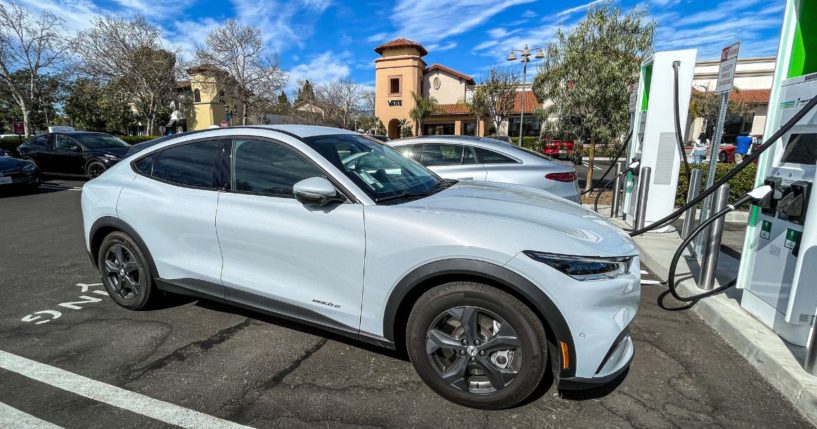
Report: Americans of All Stripes to Foot the Bill for Expansive Charging Network, Whether They Have an Electric Vehicle or Not
As the United States develops electric vehicle charging stations, everybody gets to pay for them — even those who can’t afford or don’t want an EV.
To begin with, states that develop an EV charging infrastructure can have 80 percent of those costs paid by the federal government through the infrastructure bill passed by Congress. As noted by the Federal Reserve Bank of Dallas, American taxpayers will fork over $7.5 billion to build 500,000 charging stations by 2030.
But even for those who might not get socked by taxes, if you turn on the lights, you will pay for EV owners to charge their cars.
Minneapolis-based Xcel wants to build 730 charging stations in Minnesota. Once that $170 million investment is complete, it would operate those charging stations, according to the Minneapolis Star-Tribune.
However, Xcel’s plans “would ultimately be paid for by Minnesota ratepayers,” the newspaper said.
The plans include solutions supporting businesses, multifamily buildings, community charging, transit and electric school buses. Learn more: https://t.co/XxEM24T7Tl
— Xcel Energy MN (@XcelEnergyMN) August 2, 2022
A report by Axios captured the debate.
“Xcel says the plan would encourage more of its customers to buy EVs by offering them a steep discount on electricity at its charging stations. But for everyone else — including those who can’t afford an EV — it just means steeper electricity bills, given that many communities only have a single utility,” it said Monday.
Axios noted that this will be part of a pattern in which “regulated public utilities” will “pass on the investment burden to their customers over many years.”
Utilities hold all the aces in the battle with private-sector convenience stores and gas stations, because if a gas station with a charging station supplies the power that causes a demand spike, it could pay what’s known as a demand charge.
“I’m terrified of getting hit with an EV demand charge,” said Raina Shoemaker, who operates a family-run truck stop in Lincoln, Nebraska.
Mark Boyadjis, global technology lead at S&P Global Mobility, predicted that in the end, the private sector will operate most charging stations.
But Axios said “for now, utilities could have a head start, and electricity customers will pay.”
In Minnesota, fewer than 1 percent of the registered vehicles are electric vehicles.
The state has set a goal of 20 percent of all passenger vehicles in Minnesota by 2030. That means electric vehicle registrations have to grow 24 percent every year, Xcel said in a regulatory filing.
“This is a comprehensive plan to help drive Minnesota towards its target,” said Nadia El Mallakh, Xcel’s area vice president for clean transportation and strategic partnerships, according to the Star-Tribune.
“There is now a dearth of high-speed charging in Minnesota,” El Mallakh said, declaring more charging stations are essential to increasing acceptance of electric vehicles.
Truth and Accuracy
We are committed to truth and accuracy in all of our journalism. Read our editorial standards.
Advertise with The Western Journal and reach millions of highly engaged readers, while supporting our work. Advertise Today.












